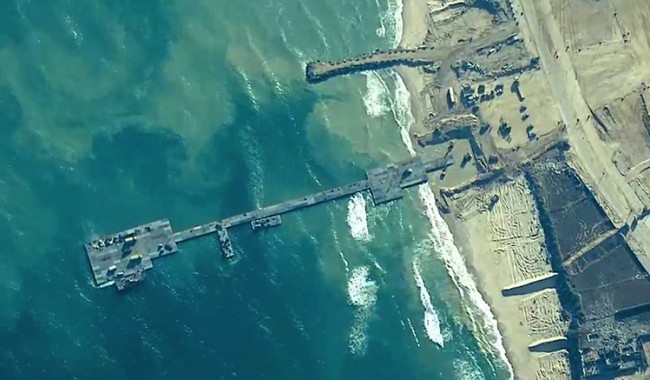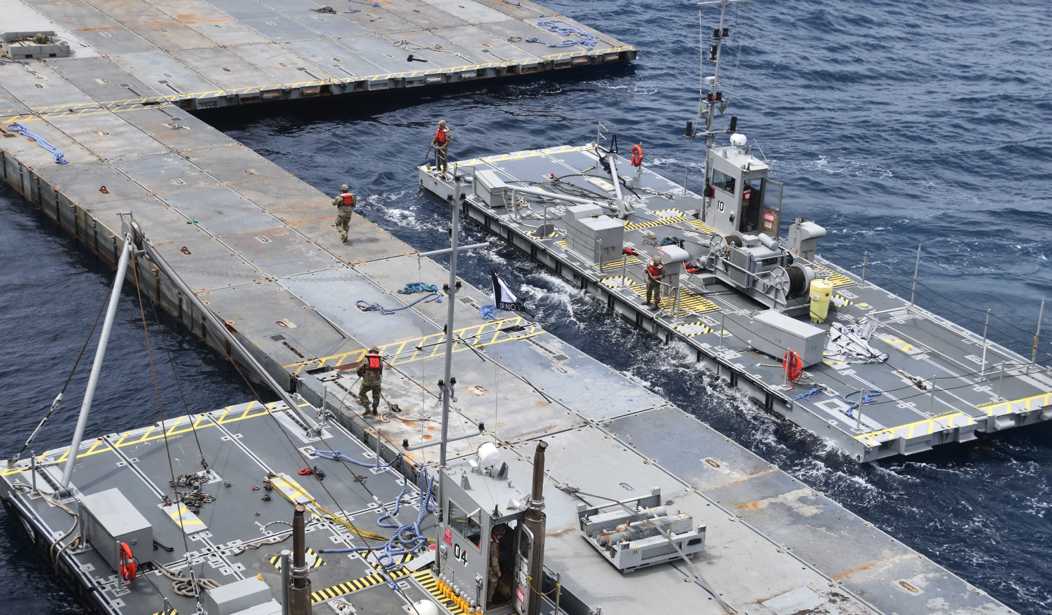Pentagon's Gaza Pier is Just a New Way to Deliver Supplies to Hamas
The founder and president of the Washington-based Gold Institute for International Strategies told RedState he is skeptical about whether the Pentagon's maritime corridor for Gazan humanitarian aid will improve the conditions for the civilians living there.
“We have all seen the videos of Hamas snipers sitting on top of the trucks—and as people are trying to get near the trucks, they shoot them,” said Eli M. Gold, who founded the Gold Institute five years ago after serving as a senior vice president at The London Center for Policy Research.
“What makes anyone believe this won't happen just because the aid is coming across a pier that the United States built--because God knows the effectiveness of the United States' humanitarian efforts in the Middle East,” Gold said.
The problem is that aid is coming in, but Hamas has diverted it to support their resistance to the Israeli Defense Forces (IDF), instead of distributing it to the general population, he said.
“There's no evidence to suggest that Hamas will not usurp this aid as they have done with all of the aid coming from Egypt, Israel, or anywhere else until now,” he said.
"In fact, we may have just opened up another way to deliver supplies to Hamas instead of getting it to the Palestinians in need," Gold said.
“Once there, there is no security of the aid that’s coming across this pier, right?” he said.
Gold, who regularly advises members of Congress and their staffers, said no one is impressed when he talks to people in Washington about the Gaza pier.
“The response that I get from most people is another roll-your-eyes at this effort, which will provide no fruit whatsoever,” he said.
Cooper touts the Pentagon's success in establishing maritime aid corridor to Gaza
The deputy commander of U.S. Central Command told reporters Thursday that the Pentagon has established its floating pier on the Gazan shore, opening up a new channel for U.S. aid to flow to that war-torn region.
“Let me be absolutely clear: The U.S. military's only role in this effort is to provide our unique logistics capability to enable the delivery of lifesaving humanitarian aid to the people of Gaza by USAID and our international partners,” said Vice Admiral Bradley Cooper, a 1989 graduate of the U.S. Naval Academy at Annapolis, Maryland.

“International efforts are underway to increase the flow of humanitarian aid to the people of Gaza through all available routes, including by land, by air, and now by sea,” said Cooper.
“We are focused on flooding the zone with humanitarian assistance. This is the policy of our government,” he said.
The career surface warfare officer said the floating pier, officially called the Joint Logistics Over-the-Shore, or JLOTS, completes a triad of channels for flowing humanitarian support.
“To complement the provision of aid through land routes, which we know is the most efficient and effective pathway to move the necessary volume of assistance,” the admiral said. “We are pursuing multiple methods to deliver aid into Gaza, from the air and now from the sea.”
The admiral said the maritime corridor is ready to go, with ships standing off in the Mediterranean prepared to bring in the aid.
“I think we're going to get about 500 tons in the next couple of days. That's a pretty substantial amount, and it's spread out over multiple ships right now,” Cooper said.
“We've got thousands of tons in the pipeline,” he said.
The floating pier, also known as a trident pier, is 1,600 feet long and is estimated to have cost $320 million.
In a May 7 Pentagon briefing, Deputy Press Secretary Sabrina Singh said the workhorse vessel bringing humanitarian aid to the floating pier is slated to be the 25-foot beam container ship Sagamore, whose route will be the 360-mile round-trip between Gaza and the logistics staging station at Cyprus.
Singh said Army soldiers assembled the floating pier at sea, although there were weather delays.
The humanitarian aid in Cyprus will travel from Cyprus to a temporary floating pier several miles off the coast of Gaza, Singh said. There, at sea, cargo will be unloaded from the Sagamore onto trucks that are onboard Army-owned landing craft utility ships, or LCUs, and logistic support vessels, or LSVs.
Singh said that the Army ships are set to travel toward Gaza, where they will meet up with the trident pier.
The trucks onboard the LCUs and LSVs will drive onto the pier and onto the shore of Gaza, where the humanitarian aid supplies can then be staged for delivery inside Gaza, she said.





Post a Comment